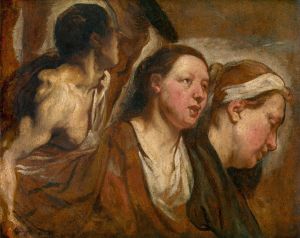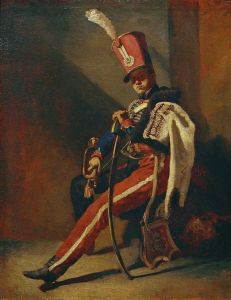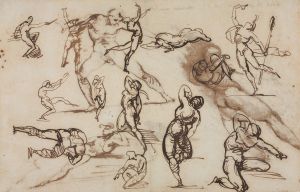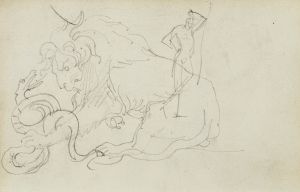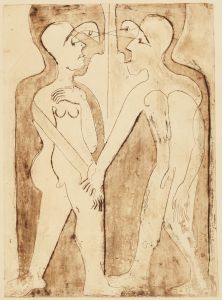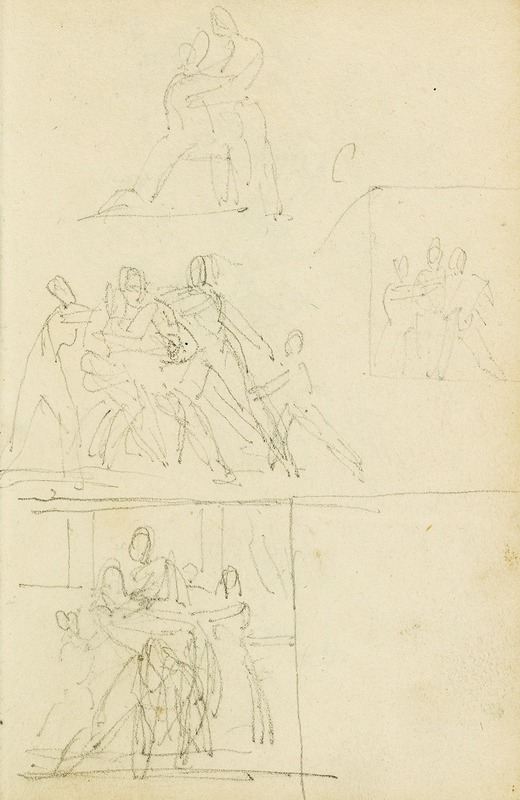
Four compositional studies for a group of figures
A hand-painted replica of Théodore Géricault’s masterpiece Four compositional studies for a group of figures, meticulously crafted by professional artists to capture the true essence of the original. Each piece is created with museum-quality canvas and rare mineral pigments, carefully painted by experienced artists with delicate brushstrokes and rich, layered colors to perfectly recreate the texture of the original artwork. Unlike machine-printed reproductions, this hand-painted version brings the painting to life, infused with the artist’s emotions and skill in every stroke. Whether for personal collection or home decoration, it instantly elevates the artistic atmosphere of any space.
Théodore Géricault's Four Compositional Studies for a Group of Figures is a preparatory work by the French Romantic painter, known for his dynamic and emotionally charged compositions. Géricault (1791–1824) is widely recognized as a pivotal figure in the Romantic movement, and his works often explore themes of human struggle, emotion, and the sublime.
This particular piece, Four Compositional Studies for a Group of Figures, is a study that reflects Géricault's meticulous approach to composition and his interest in the human form. The artwork consists of four distinct sketches or studies, each depicting a group of figures in various arrangements. These studies were likely created as part of Géricault's preparatory process for a larger, more finished work. Such compositional studies were common in his practice, as he often explored multiple arrangements and poses to achieve the desired emotional and visual impact in his final pieces.
The medium of the work is typically associated with Géricault's use of pencil, chalk, or ink on paper, though the exact materials used in this specific study are not definitively documented. The sketches demonstrate Géricault's skill in capturing movement, anatomy, and the interplay of light and shadow, even in preliminary stages. The figures in the studies are rendered with a focus on their physicality and emotional expression, hallmarks of Géricault's style.
While the exact purpose of these studies is not confirmed, they may have been related to one of Géricault's larger projects, such as The Raft of the Medusa (1818–1819), his most famous painting. However, there is no direct evidence linking these studies to any specific completed work. Géricault's oeuvre includes numerous studies and sketches, which provide insight into his creative process and his dedication to refining his ideas before committing them to canvas.
The current location of Four Compositional Studies for a Group of Figures is not widely documented, and it is possible that the work resides in a private collection or is part of a museum archive. As with many preparatory works, it is valued for its contribution to understanding the artist's methods and the development of his larger compositions.
This study exemplifies Géricault's commitment to exploring the complexities of human emotion and form, even in his preparatory works. It remains a testament to his artistic process and his influence on the Romantic movement in 19th-century art.





